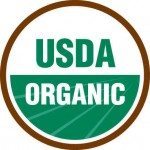
Foods that are not FDA Organic can contain harmful chemicals and pesticides that have negative effects on the body and our planet. Making smarter consumer choices at the grocery store or when dining out helps support healthier farmers and persuades the food industry to also make better choices.
While we all want to make better choice with our food, understanding the FDA’s labeling of organic food can be a little tricky. There are four classifications the FDA labels organic food: 100% Organic, Organic, Made with Organic, and Specific Organic Ingredients.
 Requirements To Label A Food As“100% Organic”
Requirements To Label A Food As“100% Organic”
Raw or processed agricultural products in the “100 percent organic” category must meet these criteria: All ingredients must be certified organic. Any processing aids must be organic. Product labels must state the name of the certifying agent on the information panel.
Requirements To Label A Food As “Organic”
Raw or processed agricultural products in the “organic” category must meet these criteria: All agricultural ingredients must be certified organic, except where specified on National List. Non-organic ingredients allowed per National List may be used, up to a combined total of five percent of non-organic content (excluding salt and water). Product labels must state the name of the certifying agent on the information panel.
Requirements To Label A Food As “Made with Organic”
Multi-ingredient agricultural products in the “made with” category must meet these criteria: At least 70 percent of the product must be certified organic ingredients (excluding salt and water). Any remaining agricultural products are not required to be organically produced but must be produced without excluded methods. Non-agricultural products must be specifically allowed on the National List. Product labels must state the name of the certifying agent on the information panel.
Requirements To Label A Food As “Specific Organic Ingredients”
Multi-ingredient products with less than 70 percent certified organic content (excluding salt and water) don’t need to be certified. Any non-certified product: Multi-ingredient products with less than 70 percent certified organic content (excluding salt and water) don’t need to be certified. Any non-certified product: May only list certified organic ingredients as organic in the ingredient list and the percentage of organic ingredients. Remaining ingredients are not required to follow the USDA organic regulations.